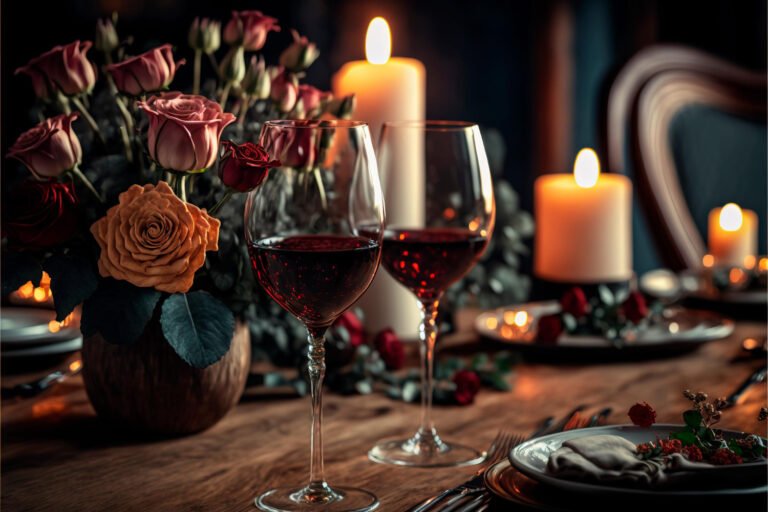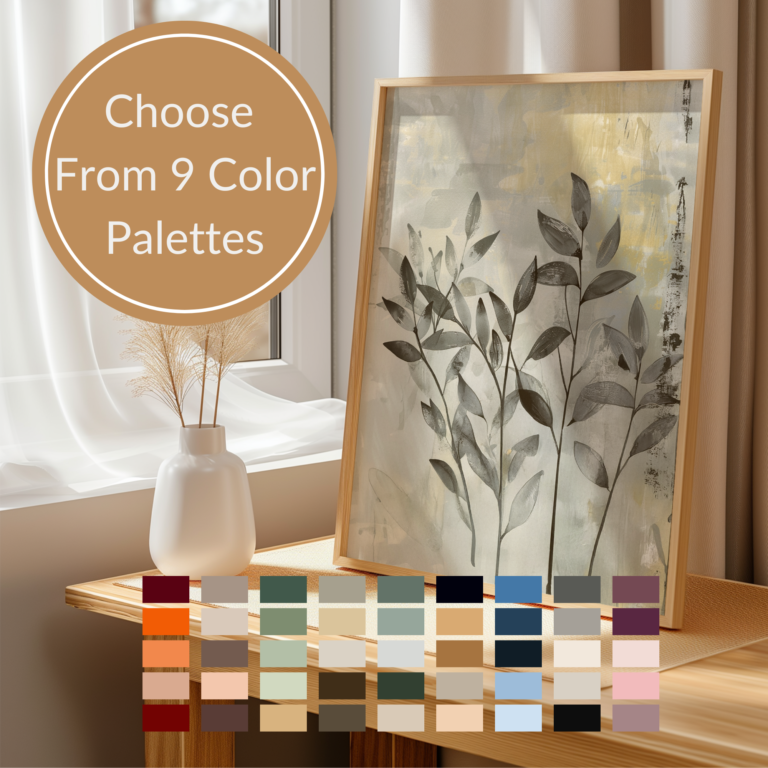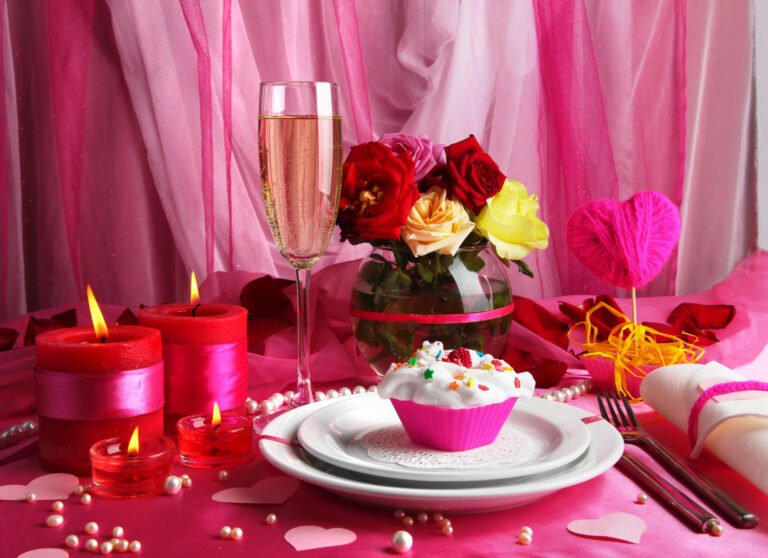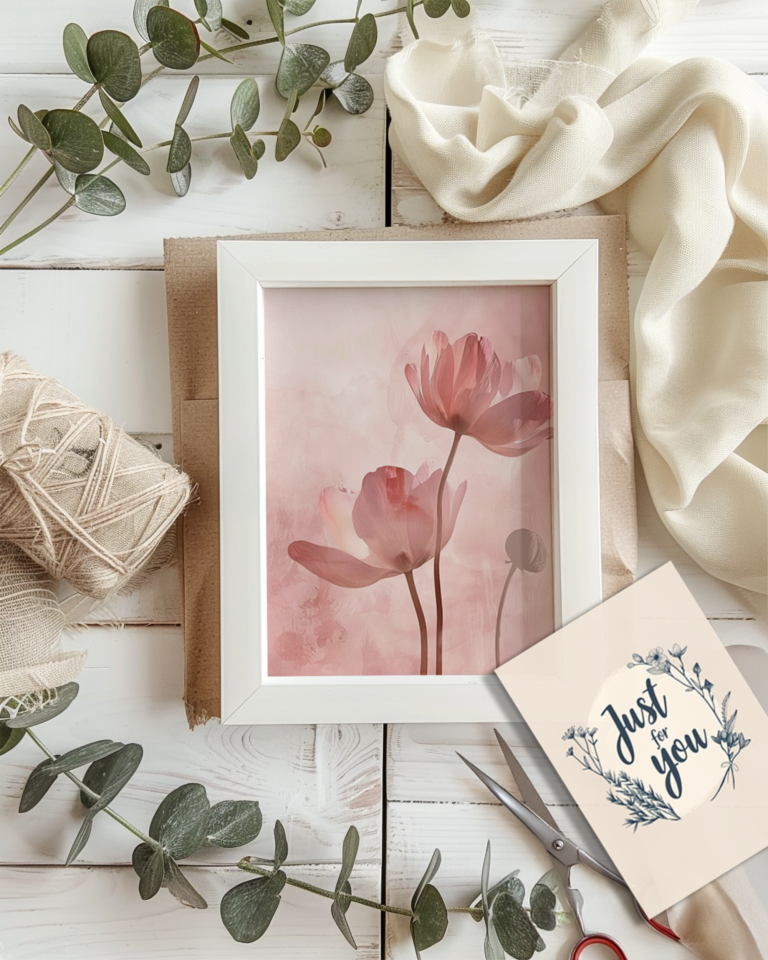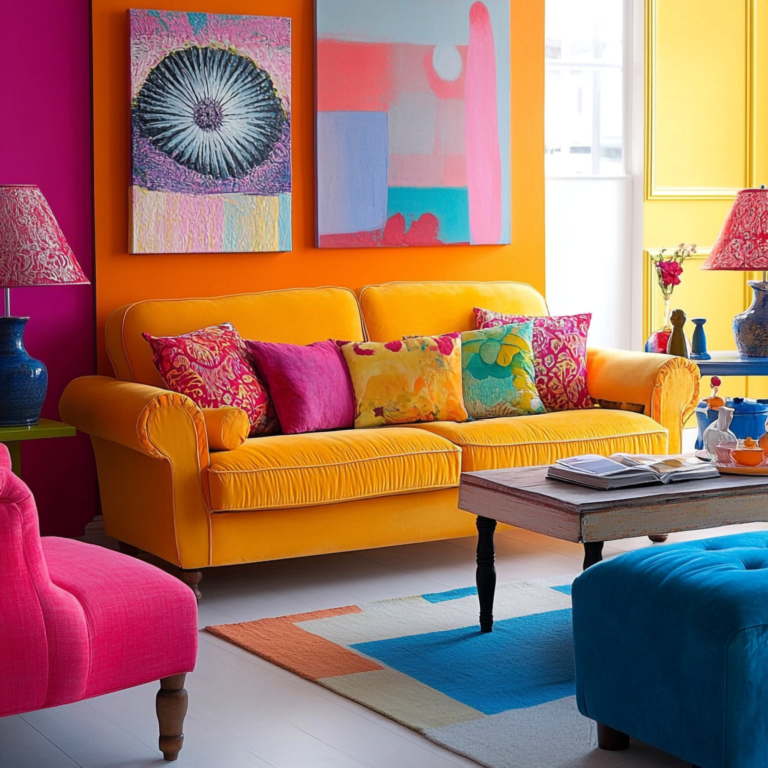Japandi Wall Art: Insights into Serenity and Style
Welcome to my blog post, where I’ll explore the fascinating world of Japandi wall art. As a lover of interior design and all things artistic, I’m excited to share this unique fusion of Japanese and Scandinavian aesthetics with you.
Get ready to discover the beauty, simplicity, and serenity of Japandi style as we delve together into the enchanting realm of Japandi wall art. Let’s embark on this journey of creativity and inspiration!
Unveiling the Genesis: Tracing the Origins of Japandi Wall Art
Harmonizing Influences: Japanese Design Principles in Japandi Wall Art
Japanese and Scandinavian aesthetics have profoundly influenced the creation of Japandi wall art. Japanese design is characterized by minimalism, simplicity, and reverence for nature. This aesthetic emphasizes clean lines, uncluttered spaces, and natural materials like wood and paper. It also values tranquility, balance, and the concept of wabi-sabi, finding beauty in imperfection and impermanence.
Embracing Coziness: Scandinavian Inspirations in Japandi Wall Art
Conversely, Scandinavian design is known for its coziness, warmth, and functionality. Inspired by the harsh climates of the Nordic region, Scandinavian interiors feature soft textures, neutral color palettes, and an emphasis on hygiene, comfort, and contentment. Scandinavian design prioritizes practicality and craftsmanship, focusing on high-quality materials and timeless simplicity.
The fusion of these aesthetics in Japandi wall art results in a unique blend of minimalism, coziness, tranquility, and warmth. By drawing from the best elements of Japanese and Scandinavian design, Japandi wall art creates spaces that are serene and inviting, stylish yet functional. This harmonious combination makes Japandi wall art so captivating and appealing to lovers of both aesthetics.

Exploring the Essence: Key Features of Japandi Wall Art
In Japandi wall art, natural elements, minimalist design, and harmony are central to its aesthetic appeal. Natural materials like wood, paper, and stone are often incorporated to bring a sense of warmth and organic beauty to the artwork. These materials add visual interest and evoke a connection to nature, reflecting the Japanese principle of “shizen” or naturalness.
Embracing Simplicity: The Essence of Minimalist Design in Japandi Wall Art

Minimalist design principles guide the composition of Japandi wall art, emphasizing simplicity, clean lines, and uncluttered spaces. This minimalist approach allows the artwork to convey a sense of tranquility and balance, inviting viewers to appreciate the beauty of simplicity and understatement.
Striving for Balance: Achieving Harmony in Japandi Wall Art
Harmony is a critical concept in Japandi wall art, as it seeks to create a sense of unity and balance in the composition. Whether through symmetrical arrangements, balanced color palettes, or rhythmic patterns, harmony is achieved by ensuring that every element of the artwork complements and enhances the overall composition.

Incorporating natural elements, minimalist design, and harmony in Japandi wall art creates a visually stunning and emotionally resonant aesthetic that celebrates the beauty of simplicity and the tranquility of nature.
Balancing Tones and Textures: Exploring the Color Palette and Materials in Japandi Wall Art
The careful selection of colors and materials is paramount in conveying the tranquility and balance inherent in Japandi style.
Each hue and texture plays a crucial role in creating harmonious compositions that evoke a sense of serenity and sophistication, making exploring the color palette and materials in Japandi wall art an integral aspect of appreciating its beauty and depth.
The Typical Color Palette in Japandi Wall Art
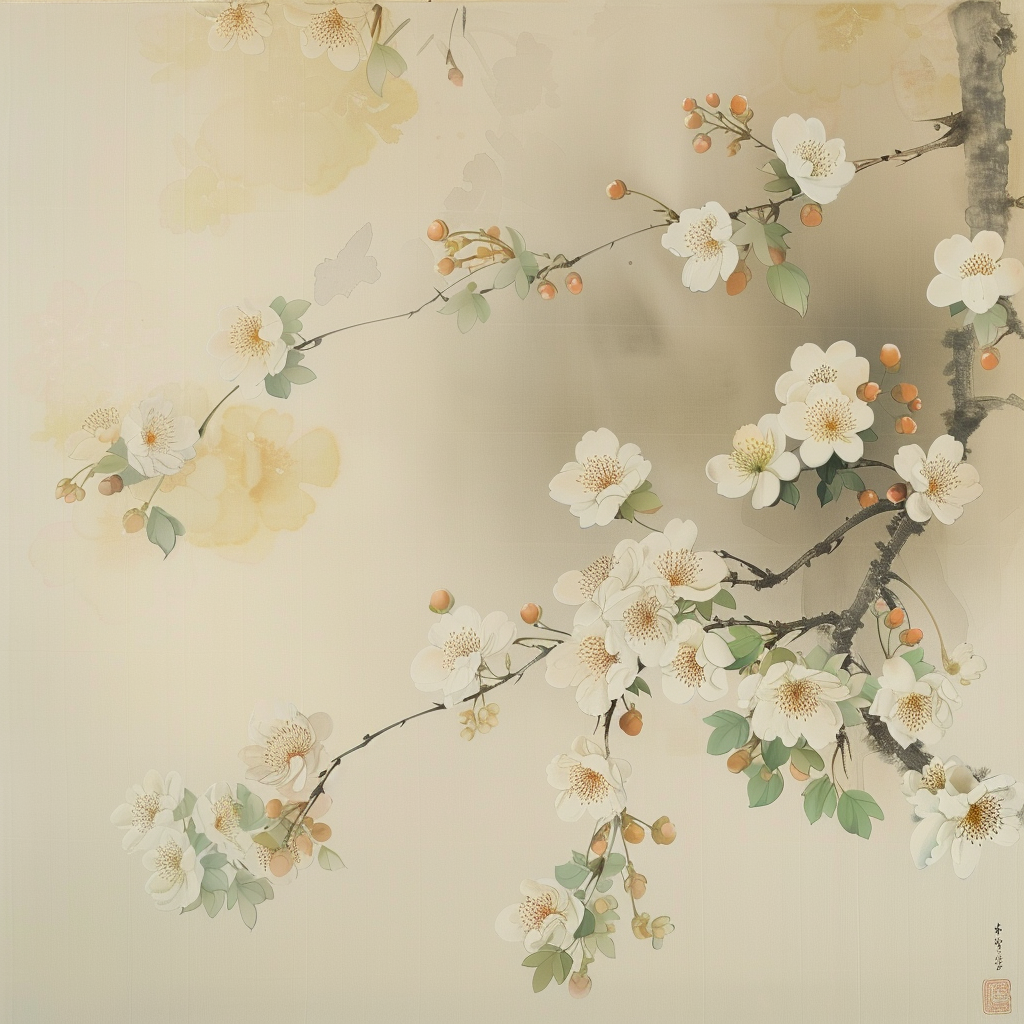
In Japandi wall art, the typical color palette is characterized by a harmonious blend of neutral tones, muted colors, and occasional pops of vibrant hues. Shades of white, beige, gray, and taupe form the foundation of the palette, evoking a sense of calmness and simplicity. These neutral tones are often complemented by earthy colors such as soft greens, warm browns, and gentle blues, adding depth and warmth to the artwork.

Additionally, Japandi wall art may incorporate accents of bold colors like deep reds, rich oranges, or serene blues, strategically placed to create visual interest and focal points within the composition. However, these vibrant hues are used sparingly to maintain the overall balance and tranquility of the artwork.
Overall, the typical color palette of Japandi wall art reflects the aesthetic principles of minimalism and naturalism, emphasizing simplicity, balance, and a connection to nature.
Exploring Symbolism: Themes and Motifs in Japandi Wall Art
The Japandi themes and symbols not only define the visual language of Japandi artwork but also carry deep cultural significance and philosophical meaning of beauty, harmony, and cultural heritage.
In Japandi wall art, you’ll often encounter a variety of common themes and motifs that reflect the aesthetic principles and cultural influences of this unique style. Some of the recurring themes and motifs include:
- Nature-inspired elements, Such as cherry blossoms, bamboo, pine trees, and lotus flowers, symbolize beauty, resilience, and the ephemeral nature of life.
- Geometric patterns, including simple shapes like circles, squares, and triangles, represent harmony, balance, and order in design.
- Minimalist landscapes: Featuring serene scenes of mountains, forests, and rivers, evoking a sense of tranquility and connection to nature.
- Traditional Japanese symbols, Such as kanji characters, torii gates, and bonsai trees, reflect cultural heritage and spirituality.
- Abstract compositions: Utilizing fluid lines, organic shapes, and negative space to convey a sense of movement, energy, and contemplation.
These themes and motifs combine to create visually captivating artworks that embody the essence of the Japandi style. The style combines elements of Japanese minimalism and Scandinavian coziness in a harmonious union.
Symbolic Significance: Conveying Calm and Style through Themes and Motifs
In Japandi wall art, themes and motifs are pivotal in conveying tranquility and style. Each element carries profound symbolic significance, contributing to the artwork’s overall ambiance and aesthetic appeal.
The incorporation of nature-inspired motifs, such as cherry blossoms or bamboo, evokes a sense of serenity and connection to the natural world. These symbols infuse the space with a calming atmosphere and impart a touch of elegance and sophistication to the decor.

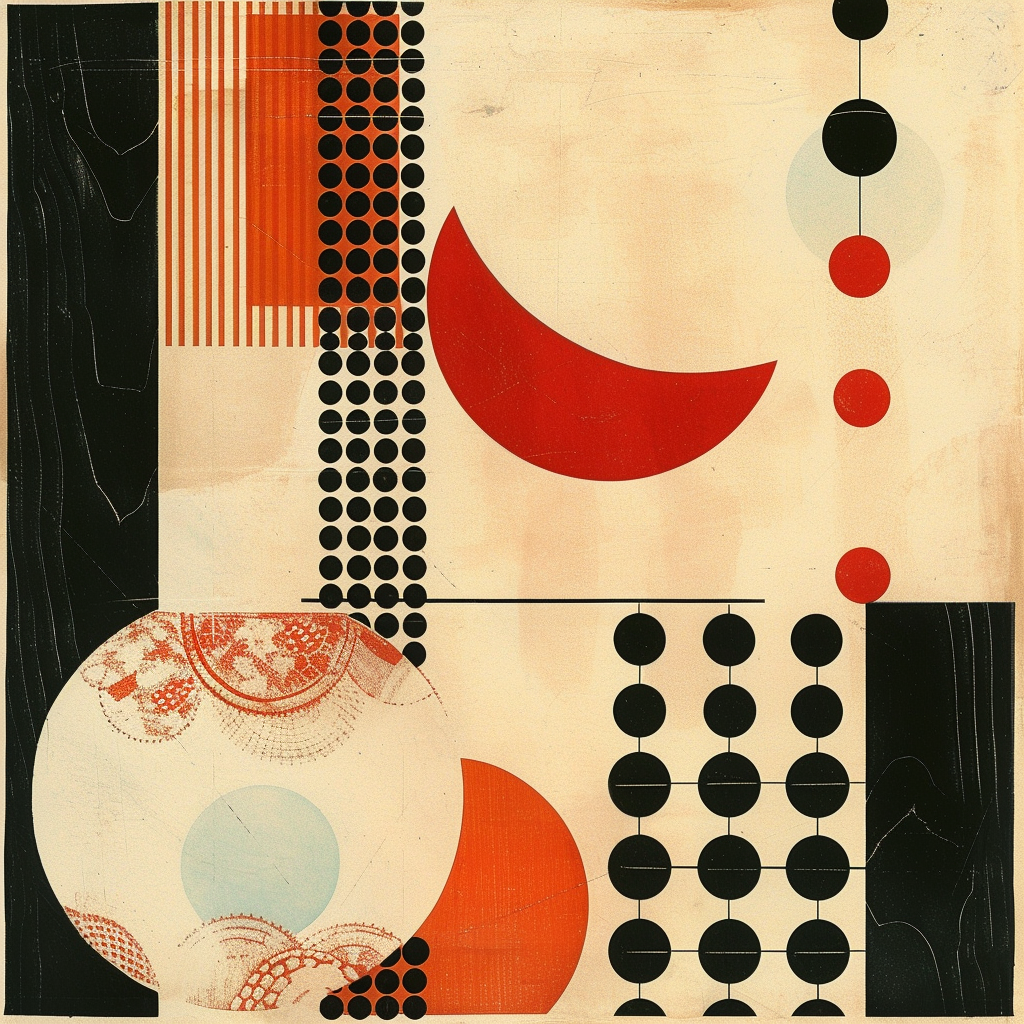
Similarly, geometric patterns and minimalist landscapes contribute to the creation of balanced compositions that promote a feeling of harmony and order. These motifs’ simplicity reflects the Japandi style’s core principles, emphasizing clean lines and uncluttered spaces to foster a sense of tranquility and balance.
Moreover, traditional Japanese symbols add cultural depth and authenticity to the artwork, enriching the space with layers of meaning and tradition. Whether kanji characters represent wisdom and enlightenment or torii gates symbolize the gateway to sacred spaces, these motifs imbue the artwork with a sense of heritage and reverence.
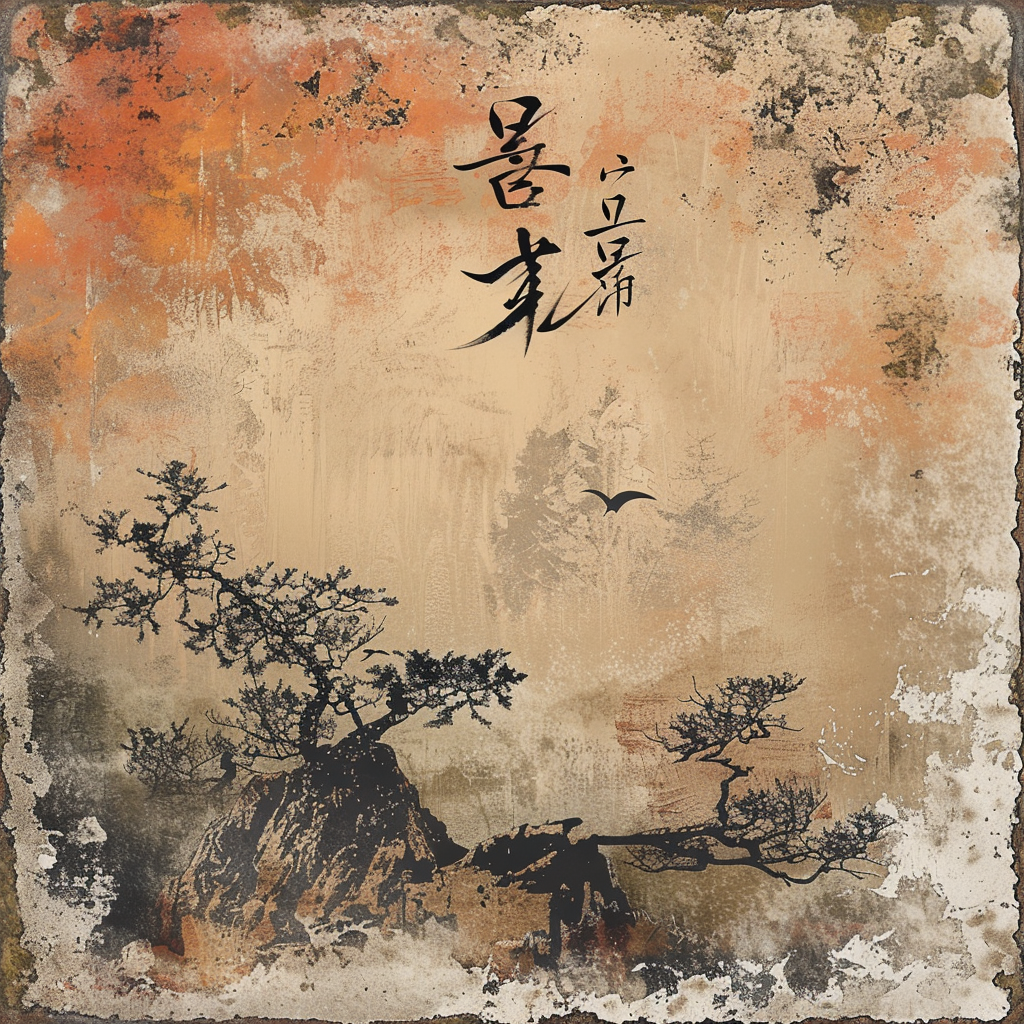
Overall, the careful selection and integration of themes and motifs in Japandi wall art elevate any space’s ambiance, striking a harmonious balance between tranquility and style. Each symbol creates a serene and inviting environment, inviting viewers to immerse themselves in the beauty and depth of Japandi aesthetics.
Seamlessly Integrating Japandi Wall Art into Your Space
Embracing Japandi wall art is more than just adding décor to your space; it’s about infusing your environment with the tranquility and style that define this aesthetic.
Whether you’re seeking to create a serene oasis in your home or elevate the ambiance of your office, Japandi wall art offers a timeless and sophisticated solution that resonates with modern sensibilities.
Here are some tips on how to incorporate Japandi wall art into different rooms:

Living Room:
- Choose a large Japandi wall art piece above the sofa or fireplace as a focal point.
- Opt for nature-inspired motifs like cherry blossoms or minimalist landscapes to create a serene ambiance.
- Keep the surrounding décor simple and uncluttered to maintain the minimalist aesthetic.
Bedroom:
- Select smaller Japandi wall art pieces to hang above the bed or on empty walls.
- Consider soothing colors like soft blues or muted greens to promote relaxation and restfulness.
- Mix and match different sizes and shapes for visual interest while maintaining a cohesive look.

Dining Room:
- Display a series of Japandi wall art pieces along one wall to create a gallery-like effect.
- Choose artwork with subtle geometric patterns or minimalist compositions to complement the dining space.
- For a cohesive look, keep the color palette harmonious with the rest of the room’s décor.
Home Office:
- Hang a single large Japandi wall art piece behind your desk to inspire focus and creativity.
- Look for artwork with clean lines and minimal distractions to promote a clutter-free workspace.
- Incorporate natural elements like wood frames or botanical motifs to bring a sense of calmness to the environment.

Entryway:
- Use Japandi wall art to create a welcoming focal point in the entryway.
- Consider artwork with symbolic motifs like kanji characters or traditional Japanese symbols to set the tone for the space.
- Keep the surrounding area clutter-free and minimalist to make a striking first impression.
By following these tips, you can seamlessly incorporate Japandi wall art into different rooms of your home, enhancing the overall ambiance with its serene and stylish aesthetic.
Crafting Harmony with Japandi Wall Art
Incorporating Japandi wall art into your space goes beyond mere decoration; it’s about curating an environment that exudes harmony and tranquility. The placement of these artworks plays a crucial role in defining the room’s overall aesthetic. Whether you choose a single large piece as a focal point or opt for a curated gallery wall, thoughtful placement can enhance the space’s flow and balance.

Furthermore, the style of Japandi wall art sets the tone for the entire room. From minimalist landscapes to abstract compositions, each artwork conveys a distinct mood and energy. By selecting pieces that resonate with the desired ambiance, you can create a cohesive look that reflects your style and enhances the room’s atmosphere.
In addition to the artwork, decorative accents and accessories play a vital role in complementing the Japandi aesthetic. Natural elements such as wooden frames, woven textiles, and potted plants can add warmth and texture to the space while maintaining the minimalist sensibility of the Japanese style. Thoughtfully chosen decor elements, such as ceramic vases, sculptural objects, or traditional Japanese crafts, can further enrich the visual experience and imbue the space with character and depth.

Ultimately, carefully considering placement, style, and decorative accents is essential in creating a harmonious and inviting environment with Japandi wall art. By curating each element thoughtfully, you can cultivate a space embodying this captivating aesthetic’s serene elegance and timeless allure.
Elevating Serenity and Style: The Benefits of Japandi Wall Art
Japandi wall art contributes to a sense of tranquility, balance, and style in several ways:
Tranquility: The serene motifs and minimalist compositions found in Japandi wall art evoke a sense of calm and relaxation, creating a peaceful atmosphere in any space.
Balance: The harmonious blend of Japanese minimalism and Scandinavian coziness in Japandi wall art promotes a feeling of balance and harmony, both visually and emotionally.
Style: The sophisticated aesthetic of Japandi wall art adds a touch of elegance and refinement to any room, enhancing its overall style and sophistication.
By incorporating Japandi wall art into your decor, you can create a tranquil, balanced, and stylish environment that fosters well-being and aesthetic pleasure.
Exploring Japanese Wall Art: A Journey Through Artists and Designers
Let me guide you through a captivating showcase of Japandi wall art, where each piece embodies the distinctive style of renowned artists and designers meticulously crafted by Affylife.
In this collection, you’ll discover a curated selection of artworks seamlessly blending Japanese and Scandinavian aesthetics.
Join me as we delve into the serene beauty and modern elegance of Japandi wall art, expertly brought to life in the unique styles of these talented creators.
Yayoi Kusama
Known for her mesmerizing polka dot patterns and immersive installations, Kusama’s artwork often features bold colors and repetitive motifs that create a sense of infinity and wonder.
Click here to explore their profile and immerse yourself in their captivating creations.

Hiroshi Senju
Renowned for his breathtaking waterfall paintings, Senju’s work captures the serene beauty of nature with minimalist brushstrokes and a deep appreciation for light and shadow.
Click here to explore their profile and immerse yourself in their captivating creations
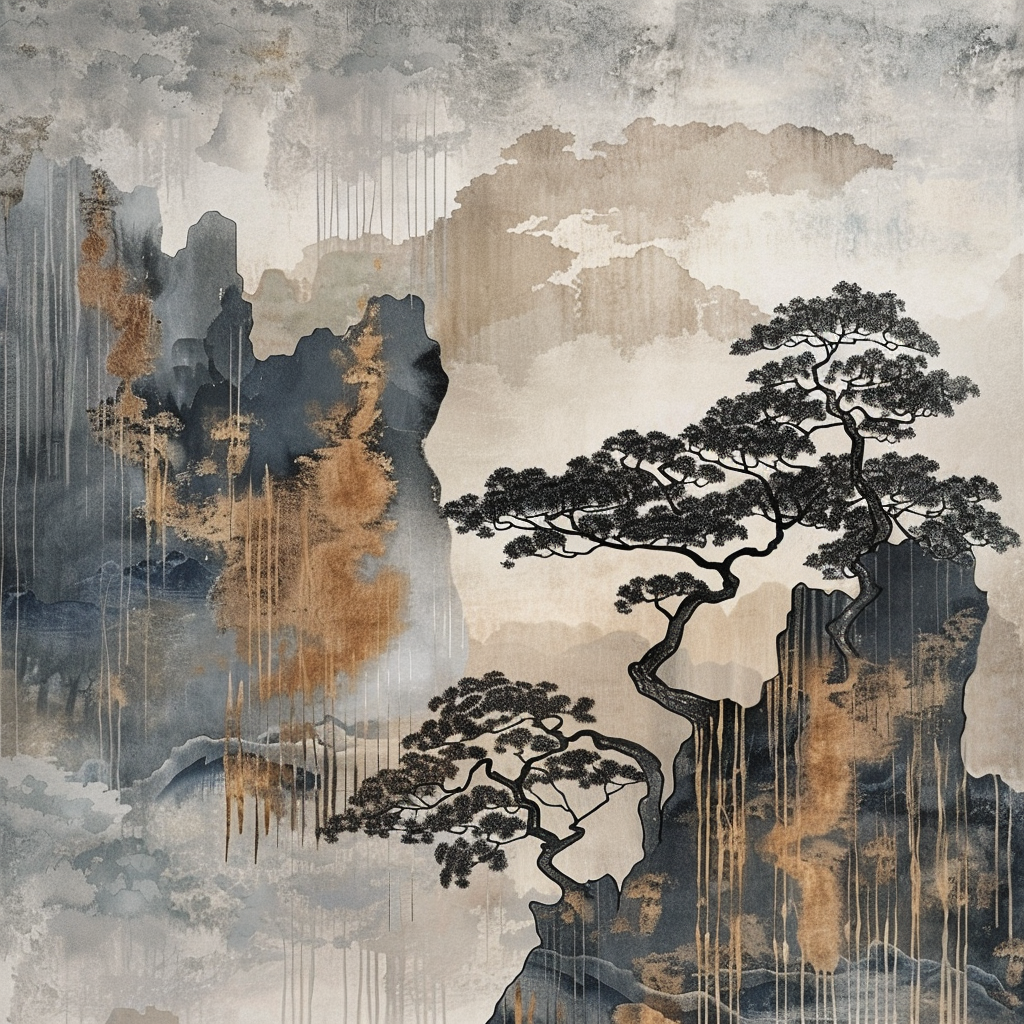
Hokusai
A legendary Japanese ukiyo-e artist, Hokusai’s iconic woodblock prints, such as “The Great Wave off Kanagawa,” depict dramatic landscapes and seascapes with intricate details and dynamic compositions.
Click here to explore their profile and immerse yourself in their captivating creations.
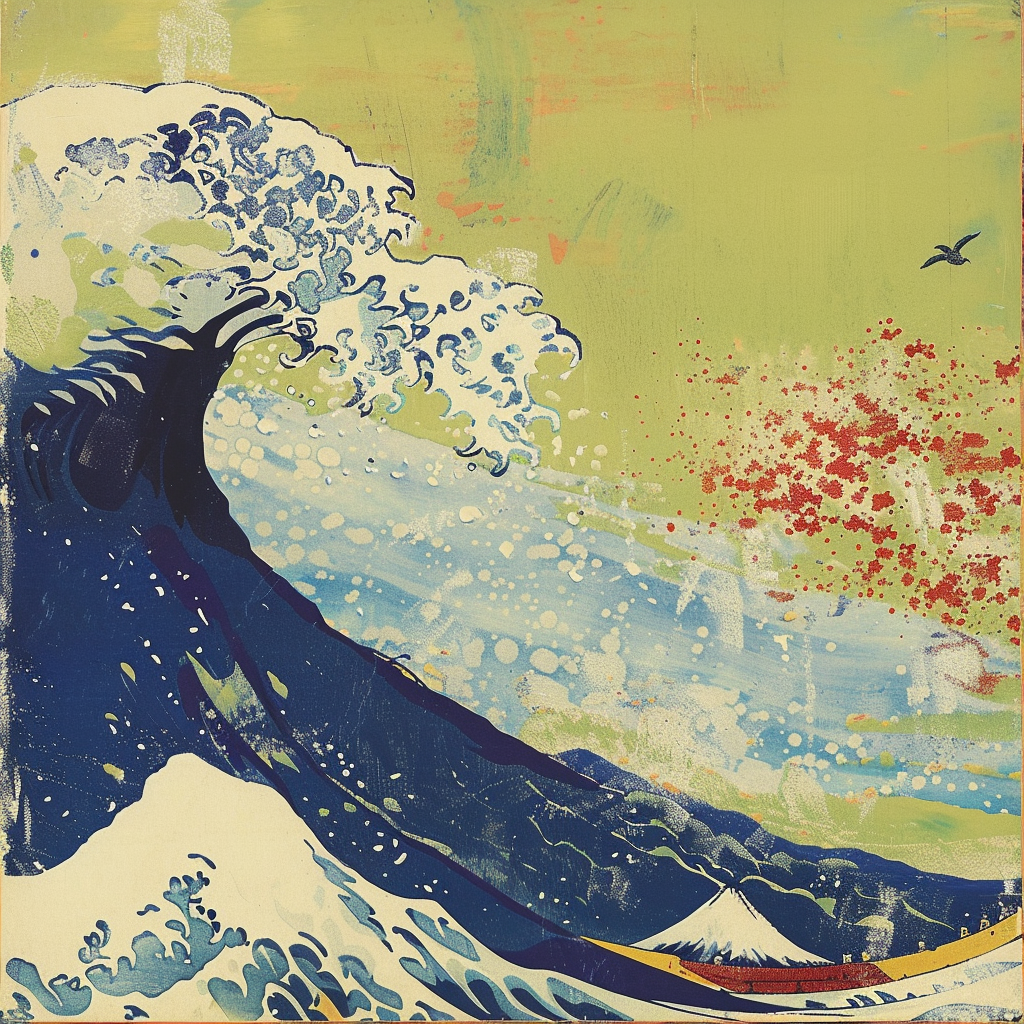
Hiroshi Yoshida
Renowned for his exquisite woodblock prints of landscapes and nature scenes, Yoshida’s delicate and precise techniques capture the serene beauty of the Japanese countryside.
Click here to explore their profile and immerse yourself in their captivating creations.
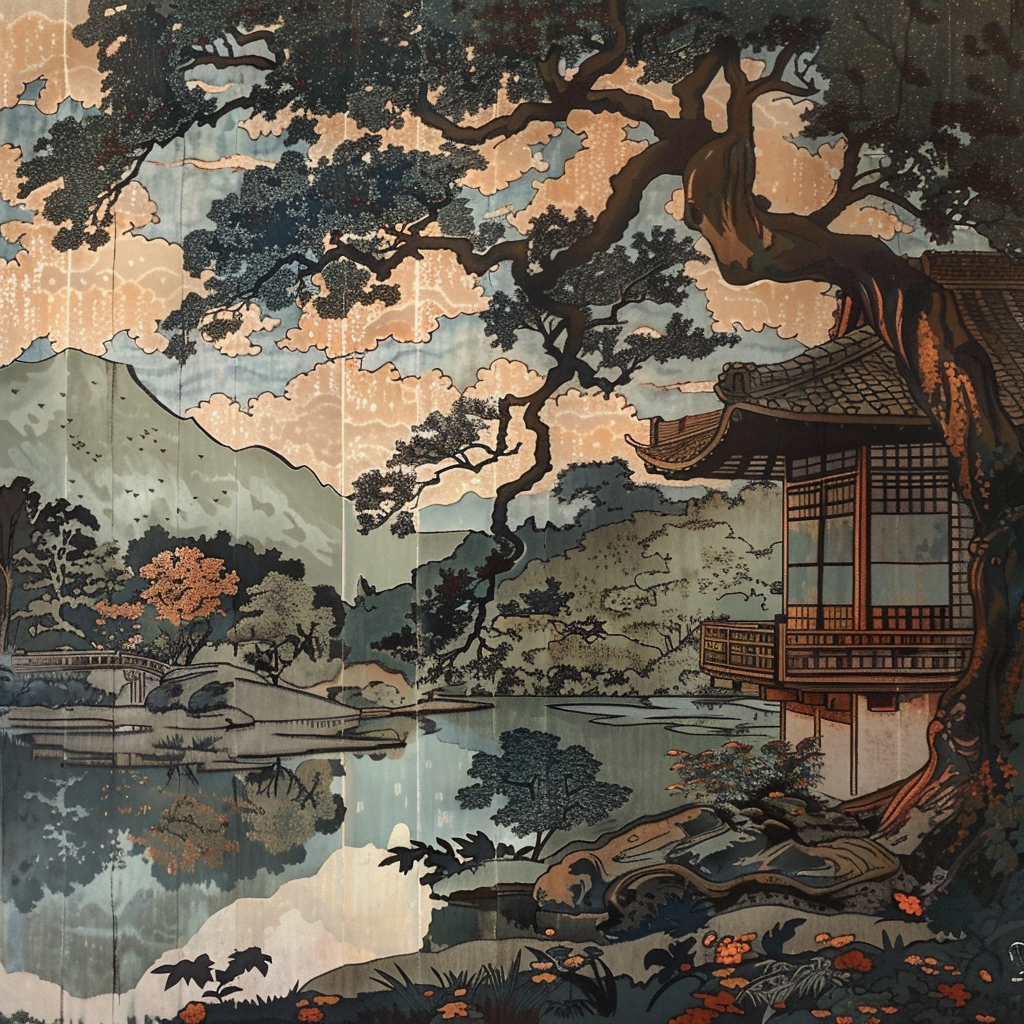
Takashi Murakami
Blending traditional Japanese motifs with pop culture iconography, Murakami’s vibrant and whimsical artwork often features colorful characters and psychedelic imagery that captivates viewers with playful charm.
Click here to explore their profile and immerse yourself in their captivating creations.
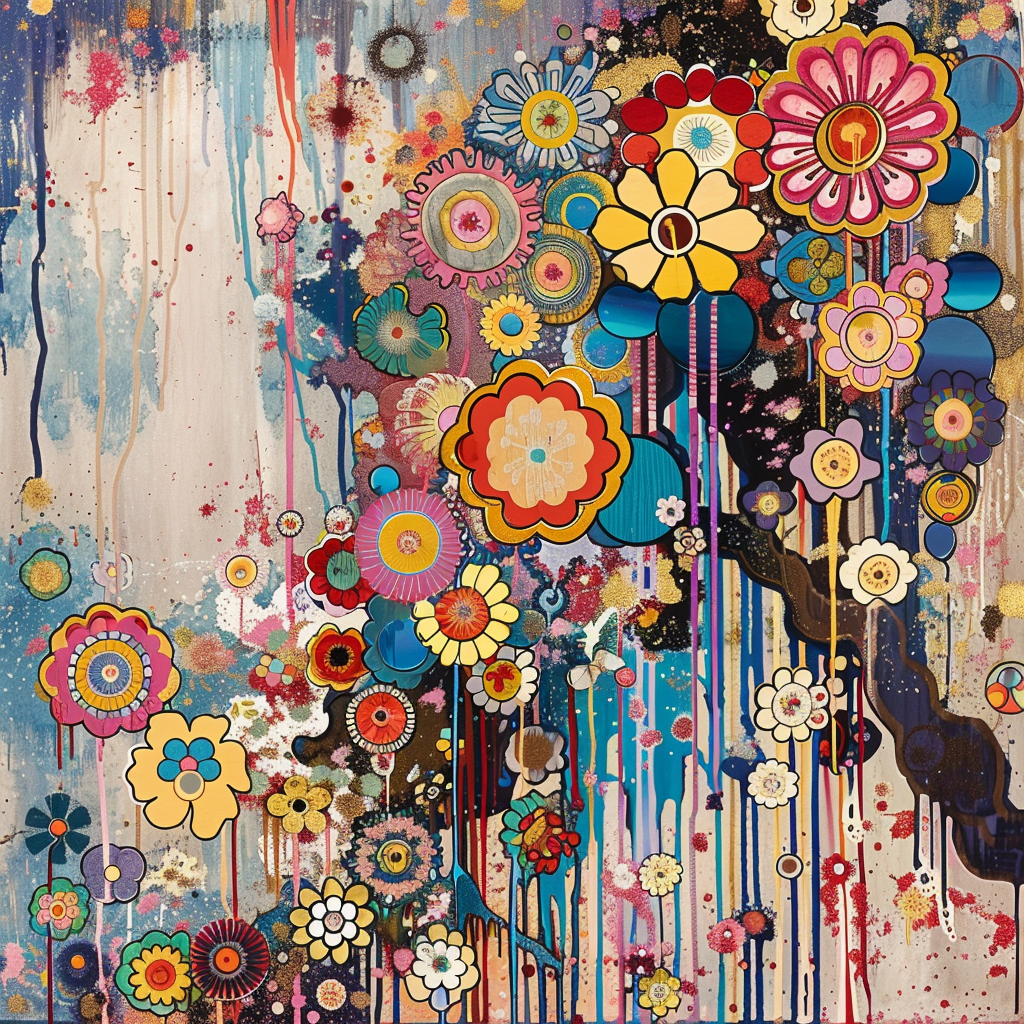
These artists and designers represent diverse styles and techniques within Japanese wall art, showcasing the richness and depth of Japan’s artistic heritage.
Explore the captivating allure of Japandi wall art with me. Throughout this showcase, we’ve delved into the harmonious blend of Japanese and Scandinavian aesthetics, meticulously curated to embody the essence of serenity and style.
I encourage you to embrace the tranquility and modern elegance of Japandi design in your own space. Let these artworks inspire a sense of balance and beauty as they grace your walls, creating a sanctuary of calm amidst the hustle and bustle of daily life.
Join me in celebrating the timeless appeal of Japandi wall art and infuse your home with its soothing charm today.
Please note that I created the images presented here, drawing inspiration from the styles of Japanese artists.
Just a heads up, folks—you might notice some affiliate links sprinkled throughout this post. No worries, though! These are just little helpers that may earn me a small commission if you decide to purchase them. It’s a win-win situation: You get awesome recommendations, and I get to keep creating more content for you. Thanks a bunch for your support!
Japandi wall art is a fusion of Japanese and Scandinavian design aesthetics, characterized by minimalist compositions, nature-inspired motifs, and serene color palettes.
You can incorporate Japandi wall art by selecting pieces that complement your existing decor, considering size, color scheme, and placement to create a harmonious and balanced space.
Common motifs in Japandi wall art include nature-inspired elements such as sakura blossoms, bamboo, and landscapes, as well as geometric patterns and abstract representations of natural forms.
Japandi wall art often utilizes natural materials such as wood, paper, and fabric, as well as modern mediums like canvas and digital prints, reflecting the blend of traditional and contemporary influences in this style.
Yes, there are various styles of Japandi wall art, ranging from traditional ink paintings and woodblock prints to modern digital illustrations and mixed-media compositions. Each style offers its own interpretation of the Japandi aesthetic, allowing diverse options to suit different tastes and preferences.

